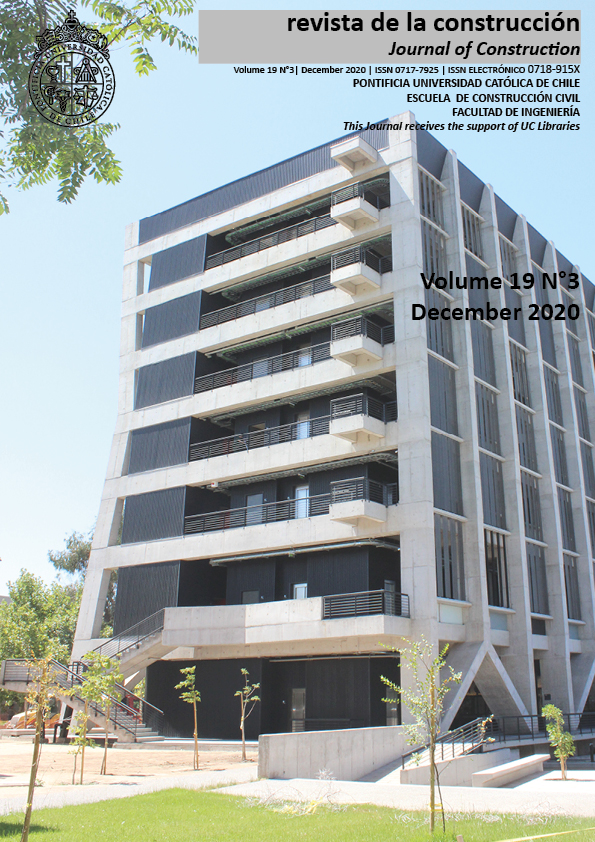Experimental analysis of fire resistance of mortar coatings on structural masonry walls
DOI:
https://doi.org/10.7764/rdlc.19.3.311-320Keywords:
fire safety, polypropylene fiber, lime, fire resistanceAbstract
The discussion on fire safety is necessary in Brazilian buildings. Current legislation requires construction with compartmentalized areas separated by walls with structural ceramic blocks capable of resisting fire for an amount of time pre-determined in norm NBR 14432 (ABNT, 2001). However, a lack of building standards requires experimental tests according to NBR 5628 (ABNT, 2001) to determine the necessary configuration to achieve fire resistance. For this purpose, this study analyzed the effect of fire on structural walls covered with a mortar coating. Experiments were conducted in real scale in a standardized vertical oven and the fire growth curve of ISO 834 (ISO, 1999). Three types of walls were tested, each with a different mortar coating: (a) lime; (b) 0.6 kg/m³ polypropylene fiber and 1.2 kg/m³ polypropylene fiber. The mortar coatings were 1.5 cm thick on the side facing the fire and 2.5 cm thick in the outside. The wall was composed of structural blocks measuring 14 cm x 19 cm x 29 cm. Fire experiments evaluated the structure stability, impermeability to hot gases and smoke and thermal insulation of each sample. Results showed that the structural system with 1.2 kg/m³ polypropylene fiber mortar coating obtained the best thermal insulation effect with the longest fire resistance time of 176 min.








